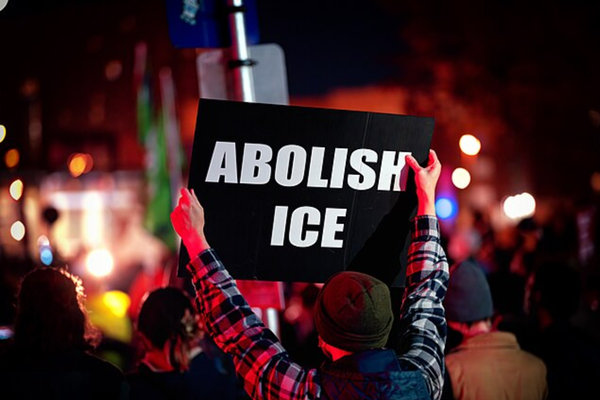
Hidden away in the storage facilities of Hollywood movie studios and entombed in the vaults of museums and libraries – both in the UK and in the US – lies the creative output and the cultural ephemera of a form of popular entertainment that we have collectively chosen to forget.
This vast collection includes the recordings of hundreds of songs that were hugely popular in their day. Alongside them are thousands of books, posters, theatre programmes, advertisements, children’s toys, Hollywood movies and a significant slice of the early output of the American cartoon animation industry. All of this material – the product of millions of hours of human creative effort – is culturally radioactive. The only people who pay it much attention are historians.
These toxic collections are the artistic and physical detritus of a form of entertainment that from the late 1830s right through until the 1960s and 70s was part of the lives of millions of people. While the songs are today never performed and the films either never broadcast or heavily edited, the central image of this genre remains vivid and grotesque – a white face “blacked up” with burnt cork.
Blackface minstrelsy was a bizarre and disturbing form of racial impersonation founded on cultural appropriation. It took the creative output of enslaved African Americans and weaponised it against them. Minstrelsy was not merely a reflection of American racism – it also became one of the great engines of that racism, propagating and reinforcing ideas that were used to justify slavery and then segregation. It disseminated racial terms and racial stereotypes so potent that some are still with us in the 21st century. It was literally racism made into an artform.
While most people in Britain know little about minstrelsy, the presumption has always been that it was an American phenomenon, an ugly feature of someone else’s history. Yet blackface minstrelsy was arguably America’s first great cultural export, the first form of global Americana, and almost from the moment it emerged in the 1830s it became a transatlantic phenomenon.

The man many regard as its originator – or at least its pioneer – was the white American performer Thomas D Rice. In 1832, he invented a minstrel character known as Jumping Jim Crow. Within two years, Rice had brought his creation to the London stage. In the 19th century, making it big in the West End was, for American artists, what “breaking America” became for British rock bands in the late 20th century.
By the 1850s, waves of white Americans in blackface, singing distorted versions of African American music and lampooning African American dance and dialect, had ensured that minstrel songs were among the best-known tunes in Victorian Britain and minstrel shows a mainstay of British theatre.
British performers had jumped on the bandwagon, blacking up and performing in theatres and on the streets. The great social explorer Henry Mayhew encountered blackface minstrels on Regent Street in the 1850s, and in the same decade the black abolitionist Frederick Douglass warned that minstrelsy was hardening racial attitudes in Britain.

I have spent years reading and writing about blackface minstrelsy, and a documentary I developed on Britain’s role in the phenomenon, presented by the actor and writer David Harewood, will be broadcast on BBC Two on 27 July.
As we try to show in David Harewood on Blackface, the transatlantic history of blackface minstrelsy can broadly be divided into two chapters. The first ended and the second began one day in the spring of 1896, when the French camera operator and projectionist Charles Moisson took a walk down Rupert Street in Soho.
Moisson carried with him an early movie camera and had been instructed to film interesting spectacles that could then be shown to London audiences who were flocking to see the new animated picture technology of the cinématographe, the invention of the Lumière brothers. That day, Moisson stumbled across a group of blackface minstrels.
The short film Moisson produced is called Nègres dansant dans la rue. Filmed more than 60 years after the first minstrel shows had arrived in London, it captures a group of white men in blackface performing a dance routine in front of a small crowd. By 1896, three generations of British men had applied burnt cork to their faces and made their living through racial impersonation – presenting audiences with what was by then a highly ritualised image of African Americans – a people about whom they knew little and who lived in a nation they had never visited.

I’ve watched Moisson’s film dozens of times, and what captivates me most are the young boys lined up on Rupert Street: they are as captivated by the unfamiliar sight of a movie camera as by the far more familiar image of street performers in blackface. Those boys will have been in their late 50s and 60s by the time the Windrush arrived in that same city half a century later. In their formative years, this is the image of black people that was presented to them.
But Nègres dansant dans la rue is not just an uncomfortable oddity from the early history of cinema. That day in Soho – 3,000 miles from its place of birth – minstrelsy stumbled on the medium through which it was to write the second chapter of its history.
Cinema gave minstrelsy a terrible second life. An artform that until that moment had existed only on the stage and the street made the leap – like a virus – to a new host organism. Cinema enabled a 19th-century phenomenon to became a feature of 20th-century culture.

The films in the archives of the Hollywood studios contaminated by minstrelsy were, in their day, both critical and financial hits, and they involve some of cinema’s most famous stars. The 1938 film Everybody Sing starring a young Judy Garland is today never broadcast in its entirety. That is because of a scene in which Garland appears in blackface playing the role of Topsy, a character from Uncle Tom’s Cabin – a book that had long been associated with minstrelsy.

Three years later, Garland starred alongside Mickey Rooney, who blacked up for his role in Babes on Broadway. Back in 1936, Fred Astaire had appeared in blackface alongside Ginger Rogers in Swing Time, while Bing Crosby blacked up in three of his movies from the 1940s: Holiday Inn (1942), Dixie (1943) and Here Come the Waves (1944).
Through the early history of cinema, from the Lumière brothers up until the 1940s, minstrelsy was a constant presence as the first form of global Americana was cannibalised by the latest.
Minstrelsy’s second chapter had begun in London and was to end in the same city 70 years later. That ending arrived in 1978, when the BBC finally cancelled the Black and White Minstrel Show. In the BBC archives are years of internal correspondence about that show – one of the most popular in British TV history. In one memo, a BBC manager who had lived and worked in the US warns his colleagues that the American networks no longer broadcast minstrel shows.
In another memo, a senior BBC figure acknowledges, in passing, that by the 1960s and 70s minstrelsy was as much British as American, describing the minstrel show as part of a “perfectly honourable theatrical tradition of British music hall”.
Making a documentary about a forgotten aspect of a forgotten history is always challenging. What has made the production of this documentary so difficult – and led to me to keep changing the scripts and tweaking the final version – is the issue of language. Minstrelsy was one of the delivery systems through which stereotypes and racial slurs were transmitted from the US into British English.
Minstrel music was openly, routinely and unflinchingly described, in newspaper reviews and theatre programmes, as “N-word music”. Some minstrel troupes included the N-word in their titles, and even the name of one of the stock characters of the minstrel shows – a figure who for decades appeared on British stages – is itself a racial slur.
In one scene in the documentary David Harewood and I go through every review of a minstrel show in the British press during one month, June 1847. The majority of those reports contain the N-word.
That reality imposes an appalling dilemma and raises difficult questions. Is it possible to reveal how horrific minstrelsy was without discussing such language? Would removing those terms play into the hands of those who seek to minimise the history of race and racism? Can the warnings we make throughout the documentary be enough to protect those who – for entirely understandable reasons – would rather avoid hearing those words and seeing those images? Are there some subjects that are better left entombed in the archives?







